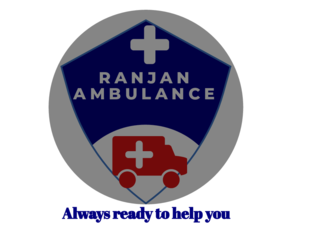
Ambulance Service in Bihar Sharif: Facilitating Emergency Healthcare Access
Bihar Sharif, located in the Nalanda district of Bihar, India, is renowned for its historical significance and cultural heritage. However, like many regions in Bihar, Bihar Sharif faces challenges in healthcare infrastructure and accessibility, particularly in rural areas. Ambulance services in Bihar Sharif play a crucial role in bridging these gaps, ensuring timely and critical medical transportation and care for its residents.
Healthcare Landscape in Bihar Sharif
Bihar Sharif, a predominantly rural district, relies on government hospitals, primary health centers (PHCs), and private clinics for healthcare services. However, the availability and quality of healthcare facilities vary across different parts of the district. Rural areas often face challenges such as inadequate healthcare infrastructure, shortage of medical personnel, and limited access to specialized medical care.
Role of Ambulance Services
Ambulance services in Bihar Sharif serve as a lifeline for residents, providing essential emergency medical transportation and care. These services are crucial not only in urban areas but also in remote villages where access to healthcare facilities is limited. Ambulances act as the first point of contact for medical emergencies, equipped with trained paramedics and necessary medical equipment to stabilize patients and transport them to appropriate medical facilities.
Types of Ambulance Services Available
In Bihar Sharif, various types of ambulance services cater to different medical needs and emergencies:
Basic Life Support (BLS) Ambulances: These ambulances are equipped with basic medical supplies and staffed with paramedics trained to handle emergencies such as accidents, injuries, and non-critical medical conditions.
Advanced Life Support (ALS) Ambulances: ALS ambulances are equipped with advanced medical equipment like cardiac monitors, ventilators, and medications. They are staffed with paramedics who can handle critical emergencies such as cardiac arrests, severe trauma, or respiratory distress.
Janani Express: This specialized ambulance service focuses on maternal and child health, providing transportation for pregnant women to healthcare facilities for childbirth and postnatal care.
Mobile Medical Units (MMUs): These units are essentially clinics on wheels, providing basic healthcare services and medical consultations in remote and underserved areas where access to hospitals or PHCs is limited.
Challenges Faced
Ambulance services in Bihar Sharif encounter several challenges that impact their efficiency and effectiveness:
Infrastructure and Connectivity: Poor road conditions and inadequate infrastructure in rural areas can delay ambulance response times, especially during adverse weather conditions.
Resource Limitations: Ambulances may face shortages of medical supplies, medications, or fuel, affecting their ability to provide timely and adequate care.
Awareness and Accessibility: Lack of awareness among residents about when and how to access ambulance services during emergencies can lead to delays in seeking medical assistance.
Initiatives and Improvements
Efforts have been made by both government and non-governmental organizations to address these challenges and improve ambulance services in Bihar Sharif:
Government Initiatives: The state government has invested in upgrading ambulance fleets, enhancing infrastructure, and training personnel to improve response times and service quality.
Public-Private Partnerships (PPP): Collaborations between government agencies, NGOs, and private healthcare providers have helped expand the reach and efficiency of ambulance services.
Community Engagement: Awareness campaigns and training programs educate residents about the importance of timely medical intervention and how to access ambulance services effectively.
Impact and Success Stories
The impact of improved ambulance services in Bihar Sharif is evident through various success stories:
Reduced Mortality Rates: Timely access to medical care has contributed to lower mortality rates for critical conditions such as accidents, heart attacks, and childbirth complications.
Improved Maternal and Child Health: Pregnant women benefit from timely transportation to healthcare facilities, reducing complications during childbirth and improving maternal and infant health outcomes.
Emergency Response Capability: Ambulances equipped with advanced medical equipment and staffed with trained personnel have enhanced the district’s emergency response capability, saving lives in critical situations.
Future Directions
Looking ahead, several strategies can further enhance ambulance services in Bihar Sharif:
Technological Integration: Implementing GPS tracking and telemedicine capabilities can improve ambulance coordination, communication, and response times.
Capacity Building: Continuous training for ambulance staff in advanced medical procedures and protocols will enhance their effectiveness in handling emergencies.
Community Empowerment: Encouraging community involvement in emergency response through initiatives such as community-based first aid training and awareness programs.
Conclusion
Ambulance services in Bihar Sharif play a crucial role in ensuring timely and critical healthcare access to its residents, particularly in rural and underserved areas. Despite challenges, ongoing efforts and initiatives have significantly improved the efficiency and reach of ambulance services, ensuring that residents have better chances of receiving timely medical care during emergencies. As Bihar Sharif continues to develop its healthcare infrastructure, the role of ambulance services will remain indispensable in safeguarding the health and well-being of its population.
